 Originally published August 28, 1992, in Comics Buyer’s Guide #980
Originally published August 28, 1992, in Comics Buyer’s Guide #980
Do we need publishers?
Forget “Do artists need writers?” or “Do writers need artists?” The question on the floor is “Do we need publishers?”
The answer to that is, Yes, of course… if you’re a publisher.
When I first started entertaining the motion of becoming a professional writer—back when I was twelve—I subscribed to magazines about breaking in. I also saved up my allowance for quite some time and eventually purchased my very own copy of The Guide to the Writer’s Market, so I wouldn’t have to keep running to the library every time I wanted to find a potential market for my latest bad short story.
And in reading about the ins and outs of becoming a professional, I came across—and even absorbed, to a degree—the utter disdain and contempt that “real” writers felt for that lowest form of publishing: the Vanity Press.
“Real” writers produced work that was publishable. “Real” writers brought their wares to publishers, great God-like entities who were capable of ruling on the quality of the work and deciding whether or not it was, in fact, publishable. And if it was not publishable, then the publisher would not want it.
But there was still an outlet: The Vanity Press. The term dripped contempt. What would happen is that you would take your book to a Vanity Publisher, and you would pay that publisher for the cost of printing the book (with, presumably, some degree of overhead built in so the Vanity publisher could turn a profit). And there you had your book. Good luck getting it distributed, of course, since book stores regarded Vanity projects with the same contempt as everyone else in the industry.
Vanity publications were there to satisfy the egos of the writers. Vanity publications were, by definition, not any good at all, because—it was reasoned—if they were any good, then the writer would have been able to find a publisher. Q.E.D.
It was not until I got older that I came to realize what “publishable” actually means.
Publishable doesn’t necessarily equal “good.” Publishable means that the publisher feels that they can make money off it. Period. It can be trashy as anything but still be publishable—hëll, that probably makes it even more publishable.
Furthermore, the decision on what’s publishable and what isn’t is made by human beings, not omniscient demi-gods. And human beings can just flat-out screw up. There are countless stories of books that made the rounds of publishers, collecting rejection after rejection before finally stumbling across someone who recognize the work’s merits… and, lo and behold, leaped onto the bestseller lists.
(Of course, bestseller lists are pretty much manufactured. Publishers decide ahead of time what’s going to be a best seller and market it as such. A book that’s slated as a “mid list,” with a modest print run and no promotion, has no chance whatsoever of becoming any sort of best seller, even if it’s the greatest novel in the history of humanity. We’re not talking literary merit, we’re talking salesmanship.)
Despite all that, however, Vanity projects—self publishing—are still not regarded as “real” books in the book industry. Vanity projects are works that simply weren’t good enough, or saleable enough, to cut it. They are the last, desperate attempt by a despairing author to get his work out to an audience, even though the authorities on the subject—the publishers—have already rendered their verdict, stating that either the work isn’t any good or, to use the popular phrase, “does not suit (their) present needs.”
Quick—name some popular book publishing Vanity projects. Chances are you can’t.
Now name some popular comic-book publishing Vanity projects.
Elfquest. Cerebus.
Oops.
Elfquest, in particular, was rejected by publishers and should have—under “traditional” publishing rules—been lousy and hidden forever from public view.
Now, no one—including me—can possibly dispute the quality and cutting-edge nature of these and other self-published titles.
Or look at Image Comics, which fits even more the definition of Vanity Press because—unlike WaRP Graphics, which was created for the purpose of publishing Elfquest—Image involves another, pre-existing publishing entity to do the “dirty work,” as it were. The line is too young to determine whether it’s ever going to advance the form in the way that a Cerebus or Elfquest has done. But no sane person can deny the sales success. And since publishers value salability more than anything, by the standard that matters above anything else to a publisher, Image is thus far an indisputable triumph.
There are marked differences between the worlds of book and comic publishing—so vast, in fact, that it’s hard to believe they’re both theoretically part of the same discipline.
1) Both have work-for-hire set-ups. They publish series of works featuring some lead character (cowboy, scourge of crime, what-have-you.) But in book publishing, more often than not, the writer is forced to hide behind either the name of the original creator of the work (if that work is handled by an independent packager) or else behind an utterly fictitious “house name” invented by the publisher. This is done to suit the display needs of bookstores, since they rack the titles by the last name of the author.
But comic book titles are racked alphabetically by the title of the book (when they’re racked in any pattern at all). It doesn’t matter who’s writing it. It’s still displayed in the same place. So comic book publishers not only have no need to stick fake names on their titles, but in fact actually benefit from followings that build up for specific creative talent.
2) Both have editors. But in book publishing, you can go head-to-head with an editor and win.
3) Both pay royalties (or “incentives,” as Marvel calls them). In book publishing, however, the average author frequently receives royalty statements late, and then gets to thrill to the complicated bookkeeping legerdemain that explains why, once again, there’s no check. In comic book publishing, the statements come in a timely fashion, have exactly one number on them (copies sold) and usually have money accompanying them.
(At least, with Marvel and DC, that’s the case. In terms of the other publishers I’ve worked for, Disney doesn’t pay royalties on any of their characters [I sure didn’t write The Little Mermaid to get rich, I’ll tell ya], and First Comics sent me one royalty statement during the three years I wrote Dreadstar. It covered “sales” on ten issues of the title, and enclosed a check for the princely sum of $13.64. I tried not to spend it all in one place.)
4) To me, the most marked difference is the perception—both among professionals and readers—towards “Vanity” projects. In book publishing, a Vanity project is the lowest form of life… an attitude, I tend to think, which was probably fostered and nurtured by publishers. In comic book publishing, however, Vanity projects—or, as it’s termed, self-publishing—is regarded as something to aspire to. It’s considered a major accomplishment to break away from the creative constraints imposed by publishers… comparable to slaves bolting the plantation… and produce titles that are straight and undiminished from the brow of the creator.
I find this a most intriguing development. Of course, I have the leeway to find it intriguing, because I’m not a publisher. I’d tend to think that publishers find it somewhat disconcerting. The status is no longer quo. I doubt that Marvel and DC Comics, a year ago, would have seriously entertained any scenario that would result in their being bumped from their industry-dominating positions of #1 and #2. These are the publishing homes of Spider-Man and Superman, after all.
Yet now—at least for the month of August—DC is #3, behind Malibu, and I can’t believe that Marvel could possibly be complacent enough not to realize that just because everything has been a certain way for as long as anyone can remember doesn’t mean that things can’t change. If DC can be jolted, so can Marvel.
Of course, Marvel finds itself in a dicey position. Do they throw lots of money and perks at the creators who are still with them, in hopes of fostering good will and stopping the erosion? But (it could be argued) the highest-paid freelancers in the history of Marvel are now in head-to-head competition with their former employers. So clearly money—which is the only thing the corporate publishing mindset understands—isn’t everything.
Do they instead concentrate on boosting the visibility and promotional value of their characters? But to do that fosters the “characters-value-more-than-creators” tag (whether it resulted from a misquote or not) that currently hangs around Marvel’s neck like an albatross… a viewpoint that, from a business point of view, has been the smart way to go over the long term. After all, Spider-Man has had consistent popularity over three decades, whereas the popularity of creators rise and fall with changing tastes.
Still—business-wise or not, it’s a mindset that leaves creators with a bad taste in their mouth, and from the short-term point of view it could be catastrophic. And you never know when the short-term can become the long-term.
Yes, it’s a tough time to be a publisher. They’re starting to look pretty superfluous. Upstart freelancers have been showing that they can go up and do it themselves, and enjoy as much—and even more—success than the publishers have traditionally allowed. Even in the case of Image, where there’s a publisher involved, Malibu is really nothing more than a hired hand. They’re collecting (by all accounts) somewhere between ten to fifteen percent. That’s not what a publisher traditionally makes. That’s what an agent makes.
This, then, would seem to be something that publishers should consider. If they’re going to have difficulty being publishers in the traditional sense, then what they may have to do is think of alternative services they could provide to the creative community. Such as:
Agents. Malibu would seem to have pointed the way with their princely 10 to 15 percent cut. Take it further. Publishers could exist exclusively to represent characters and projects to movies, TV, t-shirt manufacturers, etc., all the time collecting no more than a minimal commission.
Copy editing. This is vastly distinguished from an editor who says, “Sorry, the character wouldn’t do this” or “Sorry, I want to take the book in a different direction, so you’re fired.” A copy editor—in book publishing—goes through and points out basic errors in grammar and spelling. And in book publishing, the author has the option of saying—particularly when it comes to grammatical aberrations—”No, I did it deliberately. I don’t care if it’s a split infinitive; I want it split.” In those instances, the author has the final say. So it’s no challenge to the creative last word.
Travel agents. Publishers could field and negotiate all convention appearances, hammering out details like first class or coach, appearance fees, and limo services.
Faxing and photocopying services. This can be an extremely tedious chore. Wouldn’t it be nice to be able to just summon your publisher over and say, “Knock off two copies of this for me. Oh, and fax this over to Spielberg—I’ve kept him waiting for two days, that’s long enough to watch him sweat.”
Groundskeeping. The lawn and bushes can sometimes grow to unmanageable degrees if you’re busy hammering out your latest project. Imagine the convenience of sitting in your studio, and then looking up and waving to your publisher as he goes by pushing the old Snapper lawnmower.
Custodial duties. Hey, it’s hard to find good help these days.
Procuring sexual favors. Creators have often been made to feel like high-priced whørëš. But by that reasoning, it follows that publishers are pimps. So obtaining “companionship” for lonely freelancers shouldn’t be all that much of a stretch from business as usual, right?
Convenient tax dodge. Look at it this way—if you can’t think of any other possible use for a publisher, at the very least you can list him on your tax return as a dependent and get a few hundred bucks’ credit for him.
It’s the least we can do.
(Peter David, writer of stuff, is most appreciative to Michael Heisler for backing up his Sesame Street theory [apparently shared by lots of academic types, according to articles I’ve since received] and by providing a final bit of proof that had slipped past. The Electric Company was a wonderful program that promoted thoughtful analysis of words, encouraged reading rather than parroting, and required a decent attention span. It did not survive. Case closed. Oh… and yes, I do have a theory about the JFK assassination. I firmly believe that it was, in fact, murder.)
* * *
Footnote from the BID book collection:
As mentioned above, for the month of August 1992, Image loudly proclaimed that it had vaulted ahead of DC and was breathing hard upon Marvel. And indeed, in terms of orders, it had. However, only a fraction of the comic books solicited actually shipped—consequently, although they had the numbers on paper, that didn’t mean anything. Retailers can’t sell comic books that never arrive. DC, on the other hand, did ship the solicited comic books, so the Image claims of being the new Number Two (to quote The Prisoner) were premature.
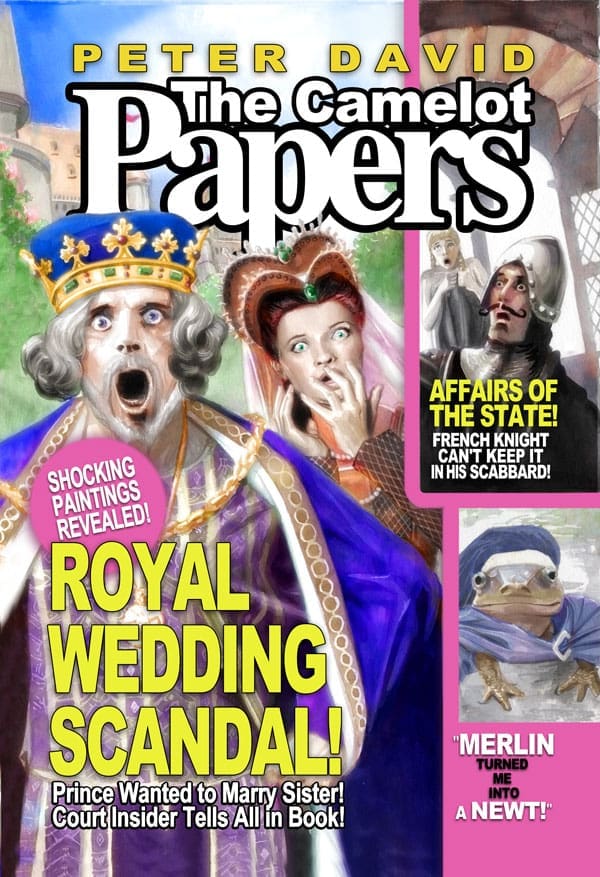
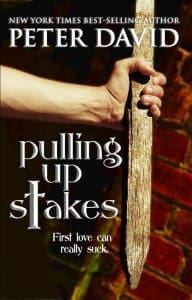
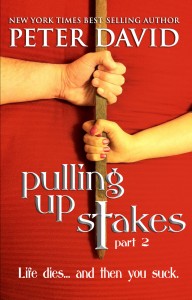
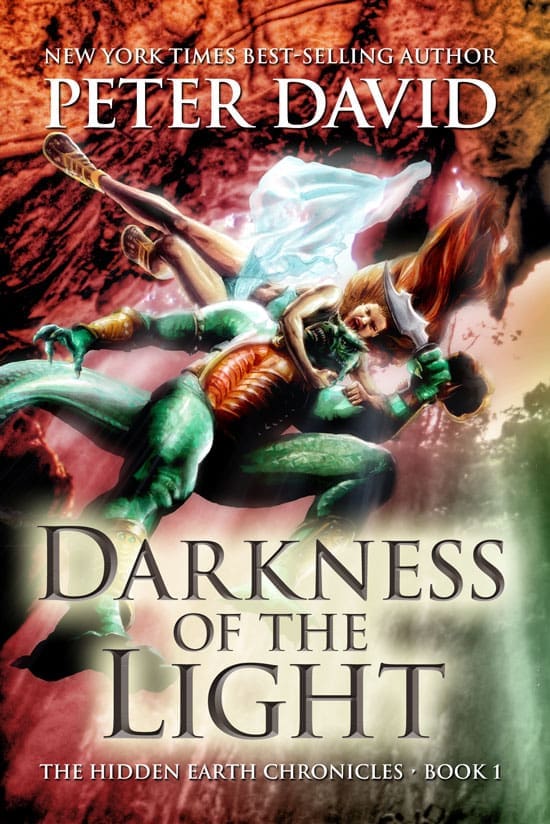
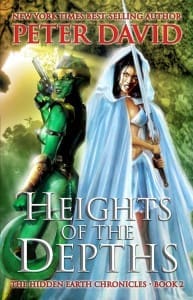
Joan Jett’s first album was rejected by something like thirty-six labels.
.
She and Kenny Laguna self-released it.
.
And, of course, nobody ever heard of Joan Jett again.
.
.
Roddy Doyle’s first novel, The Commitments was rejected by fourteen (i think) publishers.
.
He went the vanity press route.
.
Does anyone know what happened to that book?
I find it synchronous that you repost this on the same day that Brad Guigar of “Evil, Inc.” has a post celebrating his 10th year in web comics. Now we have eliminated not only the Publisher from the equation, but also the idea of Sales as well. I wonder where we will be in 2038.
(And I say that honestly and with snark, because while the web is most certainly the future of print, 18 years later the existence of Image really hasn’t changed Marvel that much, and Vanity Press is still dismissed for books.)
.
I’m not sure that the web has done away with or will do away with the idea of sales. Smaller “press” creations may post for free in hopes that ad revenue will cover their costs just as free press papers have done for decades now, but the major publishers and creators will likely still be sales oriented and readers will still buy their stuff. The upside will end up being that a Batman comic in digital form will be less than half the shelf price.
Jrery, I was going to disagree with you. I really was. Then I remembered Kindle, and that disagreement went away. The advantage to a print comic, though, is you don’t need anything else to read it. If you or I have a digicomic in whatever media we choose, and one of our sons reads it, we could end up with peanut butter and jelly and juice all over whatever piece of tech we’ve shelled out waaaaaaaay too much money for. For me, though, there’s still something more satisfying to holding the book.
I’m really confused at this point.
.
I’ll always be a bigger fan of paper and ink. Well. Maybe not when I’m 90 and I need to expand the font to size 500 to read it, but…
.
Paper and ink books are a hëll of a lot less of a hassle. Yeah, you can save storage space and load 100 books onto whatever electronic device you have to take with you on a vacation, but who goes on vacation (unless they just want to get away to read) to do nothing but read their books? Two or three books on a trip is usually fine and they don’t require batteries, recharging, wall plugs or impact resistant carry cases and I have yet to ever have had a book’s page burn out on me or break.
.
Plus you can usually find a bookstore that will give you credit for books you don’t want anymore (or don’t like that you can use to get a new one with. Not sure how well that would work out with a Kindle.
.
“Hi. If I delete this book from my Kindle’s memory while standing in your store, can I get an in-store credit against my next purchase?”
Now we have eliminated not only the Publisher from the equation, but also the idea of Sales as well. I wonder where we will be in 2038.
.
While these guys give away their comic, they certainly aren’t giving away the idea of sales. They still sell printed collections of the strips, merchandise, etc. The most successful web comic is probably Penny Arcade, and they’ve further turned to video games, conventions, etc.
As I always do when I read this particular column, I can’t help but wonder whether some comics publisher *has* procured sexual favors for one of its freelancers.
(And, of course, a great many fans seem to view comics publishers as little more than custodians of the characters and stories they loved in childhood…)
Peter David: In comic book publishing, however, Vanity projects—or, as it’s termed, self-publishing—is regarded as something to aspire to.
Luigi Novi: Successful self-publishing is. But I doubt anyone aspires to be the guy publishing an obscure, poorly written and drawn book stuffed somewhere in the shadowed portions of the rack that no one’s ever heard of–and this only applies to large stores like Midtown Comics that carry them, and not to small stores like Guttenberg, NJ’s A&S Comics, which does its business with a property the size of a few phone booths duct taped together. People aspire to do what Dave Sim and the Pinis did. They don’t aspire to do what….well, I can’t really name anyone, because if I do, chances are that no one here will know who I’m talking about, right?
.
Peter David: Procuring sexual favors.
Luigi Novi: I admit I was kinda wondering what caused that stampede toward the Image booth at that one Great Eastern convention at the Javits center in New York in 1993. At first I heard it was that they were tossing free gold copies of Supreme. Now I’m not so sure….
.
On another note, it’s fascinating to look back in this period in history when it actually looked like publishers could potentially be dinosaurs. A book would sell just by having the signature of one of the Image guys on it, or hëll, just the Image “I” on the cover. Those days are long gone.
What is your Sesame Street theory?
.
Mary,
.
http://www.peterdavid.net/index.php/2009/06/08/image-son-of-sesame-street/
In his July 10, 1992 column, Peter observed that the popularity of Image-type art like that produced by Liefeld and McFarlane was really just a symptom of a deeper generational trend within our culture, in which stimulating the eye was emphasized to the exclusion of stimulating the mind. He cited other examples of this, such as MTV, but singled out Sesame Street, because it had been around long enough to influence the hot Image-type artists of the time with its “hypnotic, high-speed technique” of non-linear images, which Peter felt was anti-intellectual, anti-thought and anti-patience, as it taught children to parrot things like simple math equations, instead of actually thinking about them, as was done with The Electric Company, which was canceled after six seasons.
.
I personally don’t agree with the main conclusions of his thesis (though some of the foundational points he utilized in illustrating it), but that’s what he said.
.
Yeah, never big on that one either. I’m the same age as the Image crew he was addressing as are many of my friends and we all thought that most of the first Image books were garbage.
I had read that essay before. I’d just forgotten about it. (After discovering this website last Spring, I went through and read most of what was here.)
Yeah, I don’t think I agree with the theory, either. I guess I’m close enough in age to the Image founders to be part of their generation, but I hated that kind of the-art-is-everything storytelling, too. And I haven’t noticed much indication that my attention-span is very short. In any case, I think the whole Image style turned out to be a fad anyway. The impression I’ve had is that fans today are more interested in writers than artists, and the popular writers tend to do long, slow stories.
I do wish The Electric Company could’ve lasted. It was great. I’ve never understood why they cancelled it. It was still popular, I believe. (Although I heard the last couple of seasons were all reruns.) I wonder if the CTW abandoned The Electric Company because it didn’t have all the licenced merchandise of Sesame Street. I imagine that even in the late 70s-80s that Sesame Street brought in a lot of money through licencing. The Electric Company only had a magazine and a tie-in Spider-Man comic.
(Yes, I know the Children’s Television/Sesame Workshop is a non-profit, but they still need to bring in the dough. In fact, some non-profits seem more obsessed with making money than many for-profit companies.)
This is a good place to tell my own story of self-publishing. Years ago, I came up with an idea for a character that I really liked. I plotted out background, powers, stories, and wrote several scripts. I got nowhere with it.
I tinkered with the character some more, even role-played her in “Champions.” As it became more apparent I was getting nowhere in the comics industry with her, I began to write a novel about her. The first draft took a little over a year from March of 1994 to April 5, 1995. I set about looking for agents and submitting the story myself to publishers. As you might imagine with a super-heroine no one has heard of, no one would touch her.
Then, in 2000, I was reading Writer’s Digest and noticing an advertisement for a print-on-demand publisher. Print on demand was/is something fairly new. You send your manuscript to the publisher, they work with you to set it in type for a fee, with extra fees for copyright (which I got) and copy editing (which I didn’t get), and other things. Then, the book is printed as orders come in. That way, you don’t end up with a garage full of copies of your book.
This sounded like a great idea to me. I could send my book in, have it printed, sell copies at conventions, and, eventually, arrange for Diamond to distribute it.
I went ahead, jacked my credit cards WAY up toward their limits, sent in my manuscript, edited the copy myself (which was not the best idea), and was told about when I’d be able to start ordering copies. The cover price would be $16 for paperback and $26 for hardcover.
And the trouble began.
It sounded like I would have my first copies to sell in time for Motor City Con in 2001. I didn’t. I had sample chapters to give away.
I had hoped to sell copies at San Diego, but, because of the delay in getting copies, I missed the deadline for a table. I was a member of Friends of Lulu, and they offered to let me use their booth to sell my book. So, I went to the convention people to ask them if they could announce my sale and signings at the Lulu booth.
They wouldn’t let me.
They didn’t make announcements for attendees. After all, too many people in previous years had asked for announcements to be made for meeting with friends, so they just stopped the policy. I offered to pay for the announcement. Nope. They’d do it for DC or Marvel or any big name, but I wasn’t any of those, and who did I think I was, as a small publisher, asking for the convention to accommodate me. I’m afraid I got rather loud and was nearly tossed from the show. I haven’t been back since.
I had dropped a copy of my book off at Diamond’s booth, along with promotional material, and was told that they’d get back to me, either via email or snail mail. (I had enclosed an SASE with the book.)
And then, my publisher increased the price of my book by $7. Paperback was now $23, hardcover was $33. I had to tell Diamond about the increase and they told me there was no way the book would sell for those prices, and that was that, as far as they were concerned.
Not long after, another author who’d been screwed over by this publisher wrote me that he’d found a different publisher whose publication rates were lower, AND, they didn’t put a price on the cover. I could sell the book for whatever I wanted to, which meant I could set a price that both would appeal to potential buyers AND still give me something after Diamond’s 60 percent cut. I wrote Diamond to inform them of this change. And I went to the Chicago ComiCon in 2002 (for which I’d bought a mannequin that I dressed up as my character – a little pricey, but, unlike a model, a mannequin doesn’t eat.) In Chicago, I gave copies of the new editions from the new publisher to several of Diamond’s people. They said they would look them over and get back to me.
And the check is in the mail. They never even answered letters or emails I sent them asking why they didn’t want to distribute the book.
I was able to get the book distributed by Cold Cut, put some ads in Comics Buyer’s Guide, and got some sales. But my dream of writing something that comics and fantasy fans all over would pick up crashed to the ground – hard.
My guess was that Diamond didn’t want to distribute anything that was POD.
But, in the past couple of weeks, I got, through Diamond, an illustrated novel, Moonie and the Spider Queen by Nicola Cuti, that I suspect was published through print-on-demand.
But, let’s face it, he’s Nicola Cuti of E-Man fame. The heyday of my career was with CBG about a quarter-century ago.
So, that was my adventure in self-publishing. If I were an artist, I could’ve been a contender, I guess. But a self-publisher writer? As Peter said, not a good idea.
‘Unlike a model, a mannequin doesn’t eat’.
How is that unlike a model?
Mannequins don’t need case lots of laxatives and emetics to achieve the result.
.
(I had a friend – i say “had” because we’ve been out of touch for years, not because i have any reason to believe that she’s come to grief, BTW – who was a classic anorexia/bulimia case {Mrs David likely remembers Kim}. Her greatest curse in regard to her disorder was that she had the type of long hands and feet and elf/pixie face that actually looked good {if you couldn’t see her pip-stem arms and legs} when she weighed ninety-seven pounds at five-foot-seven…)
Dear Kim,
Sorry to hear about your trials and tribulations with POD. Take it from one who has gone through it all, I had been turned downed by numerous small presses before venturing out on my own. POD seems to be the way to go if you believe in your project as much as I believe in “Moonie”, but, like anything else, you have to shop around to get the best deals. I had been burned by a POD press before finding one I could work with. The big expense comes after publishing when you have to let others know about your project. There is no POD for advertising. You have to open your wallets there. Best of luck to you.
Best,
Nicola Cuti